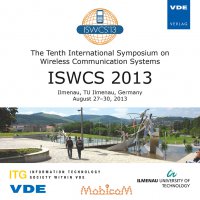On the Transmission Strategies for the Two-User State-Dependent Gaussian Interference Channel
Konferenz: ISWCS 2013 - The Tenth International Symposium on Wireless Communication Systems
27.08.2013 - 30.08.2013 in Ilmenau, Deutschland
Tagungsband: ISWCS 2013
Seiten: 5Sprache: EnglischTyp: PDF
Persönliche VDE-Mitglieder erhalten auf diesen Artikel 10% Rabatt
Autoren:
Ghasemi-Goojani, Shahab; Behroozi, Hamid (Department of Electrical Engineering, Sharif University of Technology, Tehran, Iran)
Inhalt:
In this paper, we study a general additive state-dependent Gaussian interference channel (ASD-GIC) where we consider two-user interference channel with two independent states known non-causally at both transmitters, but unknown to either of the receivers. A special case, where there is a common additive state is studied in [1], [2], where it is shown that the gap between the achievable symmetric rate and the upper bound is less than 1 4 bits for the strong interference case. Here, we also consider the case where interference link gains satisfy a12 = N1/N2 and a21 = N2/N1 (Ni is the channel noise variance) and each channel state has an unbounded variance [3], which is referred to as the strong interference. We first obtain an outer bound on the capacity region. By utilizing lattice-based coding schemes, we obtain two achievable rate regions. Depend on noise variance and channel power constraint, achievable rate regions can coincide with the channel capacity region. For the symmetric model, the achievable sum-rate reaches to within 0.661 bits of the channel capacity for signal to noise ratio (SNR) greater than one.


